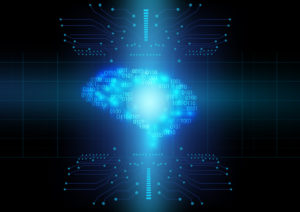Driving the other day, I decided to grab a quick bite to eat on the way home. I quickly launched my maps application, searched on the type of food I wanted, picked a local place, made sure they had decent reviews, checked their hours, and started the navigation guidance to tell me how to get there quickly.
When I did this, I was h ungry. A few seconds later, I was on my way to solving that issue.
ungry. A few seconds later, I was on my way to solving that issue.
But I didn’t break it down that I was using a mobile-sized computer to triangulate my position on the globe from satellites. I didn’t then overlay a series of restaurants from a back-end database on top of that map, which was then integrated with a reviews database as well as location-specific information about that restaurant and its hours of operation. I didn’t follow that up by evaluating different routes from my current location to the restaurant, and deciding which one to take.
This was all on auto-pilot. I decided I wanted food, looked up restaurants, made sure the food was good, the place was open, and went. This took just seconds of my time.
We get so much information from simple swipes and glances that we forget what’s really guiding all of those interactions under the hood.
All the ways that we live, work, drive, interact…have all gone beyond the scope of what many of these technologies were originally designed to do.
And it only makes sense that this sort of distillation of technology to simplify our lives has also found its way into the data center, especially with the advancement of artificial intelligence for optimization and operation of cooling systems. Data Center Knowledge described recent advancements in an article on machine learning.
We’re not quite at the fully automated, human-to-computer interfaces seen in futuristic shows like Star Trek, but the day is rapidly approaching when you can “make it so.” Just like the technology above, you’ll wonder how you ever managed without AI-driven cooling(tm).
In an AI-driven data center, you can already:
- Continually monitor conditions on your console or mobile device, from anywhere
- Know which racks have redundant cooling so you can orchestrate variable workloads automatically
- Identify the effects of “hands in the network” by viewing real-time or time-sequenced heat maps and data
- See where the cooling is being delivered using Influence Maps™
- See when floor panels haven’t been put back or blanked
- Verify that work has been completed successfully using data and performance metrics (and hold vendors accountable)
- Review anomalies that result from unexpected behavior even if they have already been mitigated by AI-driven cooling, and then review the data to see what and where you need to focus
This real-time information is immediately and continually visible from your dashboard. Walking the floor is only necessary for physical or configuration changes.
You can already see – and be able to prove – whether you really need that new CRAC, or if by shifting IT load or cooling you’ll net the same effect. You can see if your free cooling is operating as designed and have the data to troubleshoot it if not. AI-driven cooling automatically resolves issues and gives you the additional time – and critical data — to investigate further if need be.
AI-driven cooling enables autonomous, truly remote data centers to become even more cost effective as your best facility personnel can manage your most critical facilities – from miles or continents away.
Highly variable data centers which house very high-density high-heat-producing racks, in the proximity of others that don’t, will be easier to manage with less stress. Because AI-driven cooling understands the distinct cooling requirements of any situation it can automatically manage airflow within the same room for optimum efficiency.
When Fortune Magazine forecasted the “25 Ways AI is Changing Business,” they said that “the reality is that no one knows or can know what’s ahead, not even approximately. The reason is that we can never foresee human ingenuity, all the ways in which millions of motivated entrepreneurs and managers worldwide will apply rapidly improving technology.” But just as you and I have already seen what AI and mobile phone technology has done for our lives, so will it be for data center infrastructure.
And, like the power available through our mobile phones, someday soon we’ll wonder how we ever managed without AI-driven data centers.

